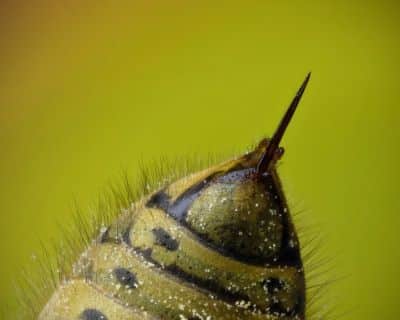In the world of medical technology, inspiration often arises from the unlikeliest sources. The latest buzz in the field involves bee stingers – yes, you read that right.
Researchers are exploring the intricacies of these tiny natural tools to develop the next generation of micro-medical devices and how they are used in the field of Biomedical Engineering.
How Did This Come About?
Bees are renowned for their precision, agility, and a unique natural engineering masterpiece: their stingers. These miniature weapons, when viewed through the lens of medical technology, offer an unexpected source of inspiration. The honeybee stinger is a powerful defense mechanism that combines painful venom, a subcutaneous delivery system, and the ability to autotomize.
It is a complex organ and to function autonomously it must carry with it all the anatomical components required to operate. Moreover, as detailed in a recent publication within the pages of the iScience journal, 3D reconstructions have unveiled the distinct characteristics of a bee stinger.
The 3D scans and reconstructions produced by UNSW Canberra will help researchers develop prototypes for tiny devices that can stay firmly attached to the skin and allow for more targeted drug delivery.
Notably, these reconstructions highlight the presence of numerous barbs, believed to be a critical factor contributing to the stinger’s tendency to remain embedded in the skin after a sting. Once detached from the bee, the stinger assumes an independent function, gradually progressing deeper into the skin while simultaneously injecting venom.
The Advantages of a Bee Stinger
Precision Engineering
Bee stingers are exceptionally fine-tuned instruments. They can deliver a potent venom payload with astonishing accuracy.
Researchers are exploring how this precision can be harnessed to develop minimally invasive micro-medical devices.
These devices could offer surgeons unparalleled accuracy during delicate procedures, reducing the risk of collateral damage and improving patient outcomes.
The application of bee-inspired precision in the development of micro-medical devices not only enhances surgical accuracy but also holds promise for reducing post-operative recovery times.

Minimally Invasive Procedures
The medical community is continually striving to make procedures less invasive. Bee stingers, with their ability to puncture skin without causing extensive damage, have captivated the imagination of medical device designers. The goal is to create micro-devices that can perform intricate procedures with minimal trauma to the patient’s body.
Drug Delivery and Enhanced Surgical Tools
Envision micro-devices that replicate the bee stinger’s precision to deliver medications directly to their target, potentially revolutionizing drug delivery systems. This breakthrough promises controlled, localized treatments with minimal side effects. Moreover, surgical instruments inspired by bee stingers hold the potential to enhance surgical precision, enabling surgeons to perform complex tasks with unparalleled accuracy. These advancements have significant implications, especially in the fields of neurosurgery and ophthalmology.
Potential for New Procedures
Bee stinger-inspired technology opens the door to innovative medical procedures that were previously challenging or impossible, providing solutions for complex medical issues.
Biomimicry and Lessons in Materials Science
The bee stinger, a prime exemplar of biomimicry, encapsulates the practice of deriving inspiration from nature to tackle human challenges. This unique intersection of biology and engineering is paving the way for remarkable advancements in the realm of micro-medical devices. Not only are bee stingers precise, but they are also remarkably resilient, built to endure the rigors of penetrating thick exoskeletons and delivering venom without breaking.
Researchers are delving into the materials and structures of bee stingers to create micro-devices with similar durability, a vital characteristic for their sustained success in medical applications. These exciting developments in biomimicry and materials science are poised to redefine the landscape of medical technology.
Bee Stingers in Biomedical Engineering
Bee stinger-inspired technology has the potential to be used in various ways within the biomedical field, revolutionizing diagnostics, treatment, and research.

Precision Surgical Instruments
Microsurgical tools inspired by bee stingers can provide surgeons with greater precision in delicate procedures. These instruments may be used in neurosurgery, ophthalmology, and other fields where precision is critical.
Additionally, the incorporation of bee stinger-inspired microsurgical tools into medical practice can significantly advance the state of surgical precision, benefiting patients in the fields of neurosurgery, ophthalmology, and numerous other disciplines where exacting precision is paramount.
Autonomous Medical Devices and Biomaterials/Implants
The concept of autonomous medical devices, akin to bee stingers, introduces a realm of possibilities within the medical field. These devices, designed to function independently post-detachment, could undertake various tasks within the body, ranging from removing obstructions to repairing damaged tissue and administering treatments. Such autonomy holds significant promise in both diagnostic and treatment applications.
Moreover, drawing inspiration from the materials and structural design of bee stingers offers insights that can lead to the creation of more robust and biocompatible materials for implants and prosthetics. This advancement in biomaterials and implants is set to make significant strides in improving the quality and durability of medical devices used for various healthcare applications.
Therapeutic Implants, Diagnostic Imaging, and Improved Diagnostic Tools
The technology underpinning micro implants holds promise for both targeted therapy and enhanced diagnostic imaging. These micro implants could administer medications directly to affected tissues, providing long-term therapeutic benefits. Moreover, they might improve the precision of diagnostic imaging tools, enabling more accurate and less invasive procedures like endoscopy and laparoscopy.
In addition, this technology can be harnessed to develop more precise and less invasive diagnostic tools. For instance, innovative biopsy devices inspired by bee stingers could offer doctors better access to specific areas for tissue sampling and analysis, further advancing the field of medical diagnostics.
Tissue Engineering
Researchers are exploring how the principles of bee stingers can be applied in tissue engineering to create biocompatible materials and structures for regenerative medicine.
While the idea of bee stingers guiding the development of micro-medical devices may sound like science fiction, it exemplifies the creativity and innovation that drive progress in healthcare.
As technology continues to intersect with the natural world, we can anticipate a new generation of medical tools and devices that are not only smaller and more precise but also inspired by the remarkable world of bees.
In the future, we might just find ourselves thanking these tiny insects for their invaluable contribution to the world of healthcare.
References
Functional anatomy of the worker honeybee stinger (Apis mellifera)


